The Scots say goodbye to a queen who was particularly fond of the northern kingdom. King Charles III however, ascends the throne at a time when Britain’s cohesion is crumbling.
The solemn procession with the coffin of Queen Elizabeth II in the streets of Edinburgh.
It is an impressive funeral procession that moves step by step from Holyrood Palace through Edinburgh’s old town to St Giles Cathedral. Led by two mounted police officers and flanked by soldiers of the Royal Scottish Guard, a hearse carries Queen Elizabeth II’s coffin. Behind them are the four children of the Queen: King Charles III, Princess Anne, Prince Edward and Prince Andrew, who lost his military title because of the Jeffrey Epstein sex affair and must therefore march in civilian clothes.
The Royal Mile, which runs up the hill from Holyrood Palace to old Edinburgh Castle, is considerably narrower than the imperial boulevards of London. Thousands of local residents and tourists crowd the medieval houses to pay their respects to the late queen. A critic of the monarchy only briefly disturbs the silence with heckling, but these are lost in a determined chorus of “God Save the King” calls.
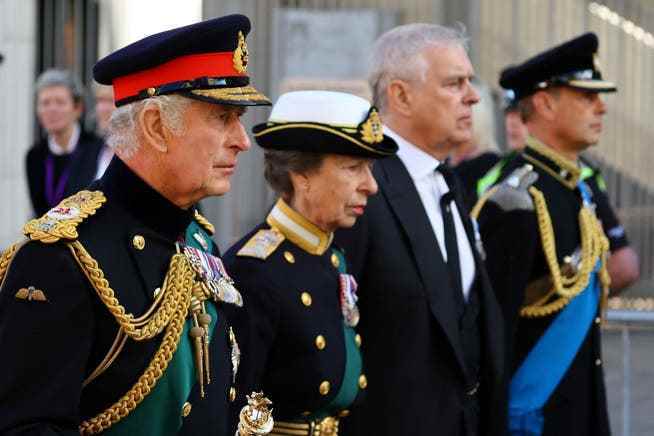
The Queen’s four children walk behind the coffin: King Charles III, Princess Anne, Prince Andrew and Prince Edward (from left).
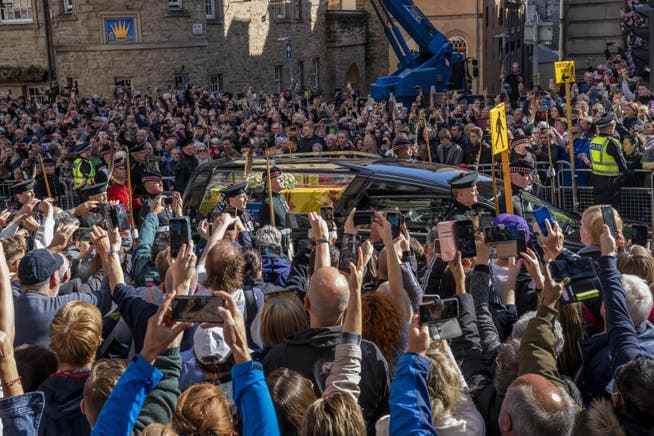
Thousands line the streets to witness the procession from Holyrood Palace to St Giles Cathedral.
Royal love for Scotland
Edinburgh shows its sunny side this Monday and pays its last respects to a Queen who was particularly fond of Scotland. Her mother’s family came from the Scottish nobility. And about her father King George VI. could the Queen on a direct descent from the Scottish King James VI. who was crowned King James I of England in 1603 after the death of the childless Queen Elizabeth I, thereby founding the union of the two kingdoms.
Above all, however, the Queen had always felt particularly comfortable in Scotland and among the Scots. The country estate at Balmoral Castle near Aberdeen, once acquired by Queen Victoria, was considered the Queen’s favorite residence. Even as a princess, Elizabeth II spent carefree summer months here, far away from the hustle and bustle of Buckingham Palace. Here she enjoyed hikes and picnics on the estate, which encompasses some 50,000 acres of heathland, forest and farmland. And here she died peacefully on Thursday.
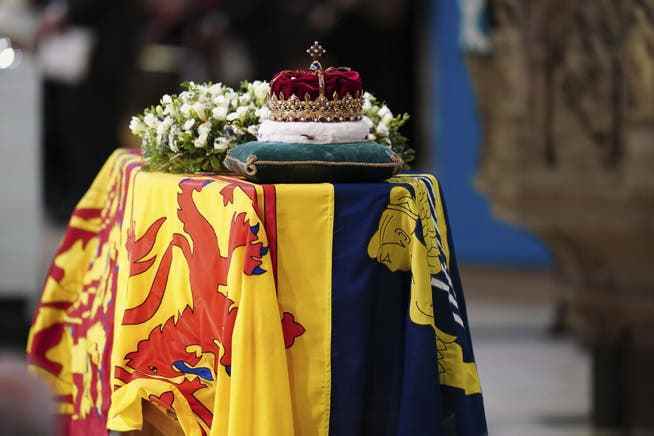
The Scottish crown rests on the Queen’s coffin during the memorial service at St Giles Cathedral.
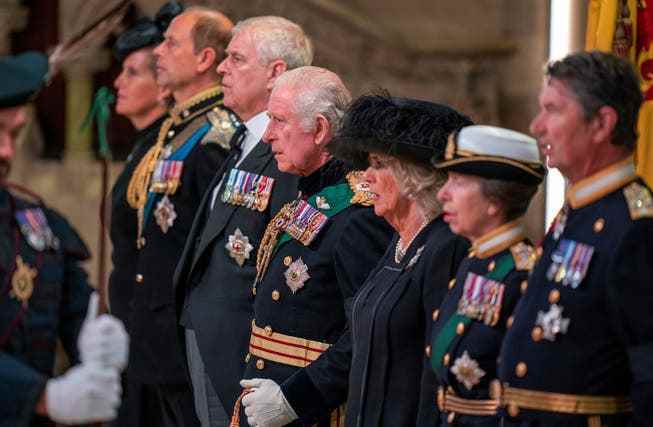
King Charles III, Queen Camilla and other members of the Royal Family at the Queen’s memorial service at St Giles Cathedral in Edinburgh.
Flowers, cards and teddy bears
“The Queen’s love for Scotland was mutual,” headlines the Scottish newspaper The Scotsman. Thousands of Scots lined the streets as early as Sunday as the Queen’s coffin arrived in a hearse from Balmoral, escorted by a royal escort, in the capital, Edinburgh. The city seems busy, but at the same time there is a sense of devotion and a sincere effort among the population to bid the Queen a dignified farewell.
A sea of flowers, cards and teddy bears has gathered in front of the gates of the palace. Joanna Kerr, who came all the way from Glasgow with her little daughter in a pram, is also queuing up to honor the late Queen with flowers. “I didn’t think I would be so touched by the sight of her coffin,” she admits.
The doctor grew up in a left-liberal environment. Therefore, she knows only too well that there are also critics in Scotland who see the monarchy as an expression of English dominance. But Kerr insists she admires the Queen’s personality, her life’s work and her respect for Scotland. “I think it’s no coincidence that she just died in Scotland.”
Monarchy holds kingdom together
It is clear that the monarchy plays an important role in keeping the United Kingdom together. The Scottish King James VI. established the British flag known as the Union Jack, a combination of the crosses of St. George and St. Andrew, in the early 17th century. To this day, some members of the royal family in Scotland carry their own titles of nobility.
The Queen also became part of political life in Scotland: in 1999 she opened the regional parliament created as part of a British state reform and praised the “national character” of the Scots. Similar to British prime ministers, Scottish regional presidents now received royal audiences, and the Queen gave royal assent to legislation in Parliament. The fact that the Houses of Parliament was built next to Holyrood Palace further strengthened the bond with the Crown.
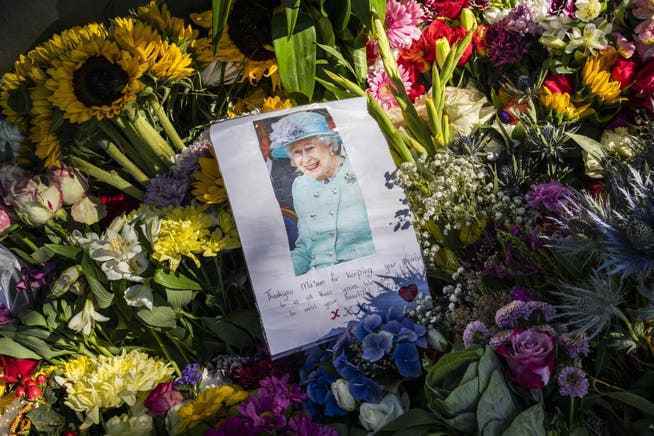
Thousands of cards and flowers outside Holyrood Palace in Edinburgh testify to Scots’ appreciation of the Queen.
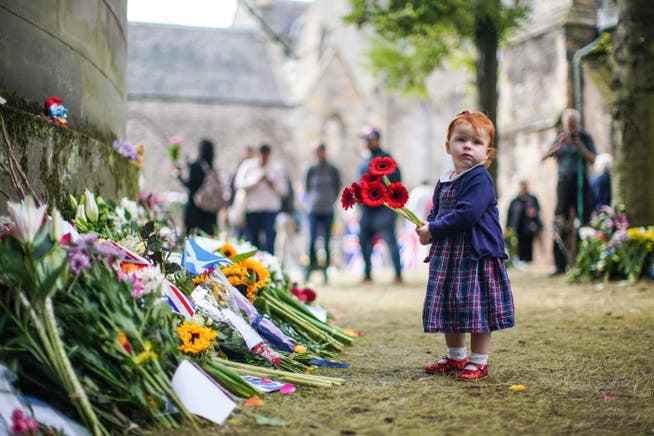
A girl lays flowers in memory of the late Queen outside Holyrood Palace in Edinburgh.
Nevertheless, the monarchy is met with less enthusiasm in Scotland than in England. In a Survey by think tank British Future In the spring, 58% of respondents across the UK were in favor of keeping the monarchy after the death of the Queen, while 25% wanted it to be abolished. In Scotland, 45 percent of the population supported the monarchy, while 36 percent supported a republic.
ambivalent nationalists
“The monarchy is less popular in Scotland than the current media coverage suggests,” explains the experienced Glasgow political scientist and pollster John Curtice from the University of Strathclyde. “It’s not surprising given that around half of Scots want secession from the UK.”
However, the nationalists in Regional President Nicola Sturgeon’s Scottish National Party (SNP) have so far shied away from openly calling for the abolition of the monarchy. The SNP officially distinguishes between the Union of Crowns of 1603 and the Union of Parliaments of 1707, which created the single-parliament United Kingdom. Given Elizabeth II’s popularity, the SNP declared before the 2014 referendum that an independent Scotland would keep the Queen as head of state – like Canada, Australia or New Zealand.
In the short term, nothing will change in this position even after the change on the throne. Polls suggest that a majority of pro-independence advocates would like a republic. According to political scientist Curtice, for the SNP, which wants to hold a second independence referendum next year, it makes much more tactical sense to ensnare voters who shy away from overly radical change with a commitment to the monarchy.
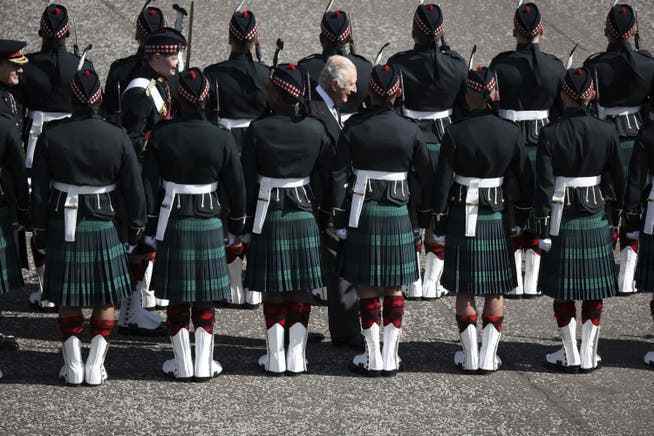
The new King Charles III. takes off a parade of honor outside Holyrood Palace.
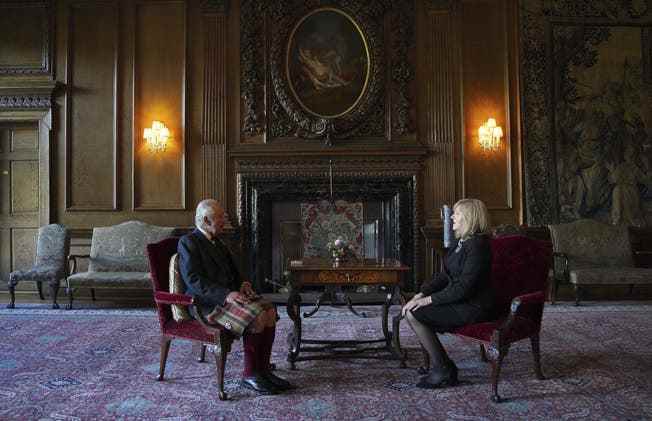
Charles visits the Scottish Parliament in Edinburgh for the first time as King, where he is welcomed by Speaker Alison Johnstone.
As the Queen was sworn to political neutrality, she has never spoken out directly on the issue of independence. But it is an open secret that the Palace would view Scotland’s secession with great concern. Scottish independence would weaken England as the center of power for the royal family and could fuel debates about the future of the monarchy in a number of Commonwealth countries. A successful referendum in Scotland would also increase instability in Northern Ireland. There, in the spring regional elections, the Irish Republican Sinn Fein became the strongest party for the first time, striving for a united Ireland.
The power of tradition
While the Queen naturally embodied the monarchy after seventy years on the throne, King Charles III. actively seek the favor of the population again. He is also ascending the throne at a time when Brexit has weakened cohesion in the UK. In Scotland, the tough Brexit course of the English Tories is met with rejection. In Northern Ireland, where the new king is expected on Tuesday, the exit from the EU has fueled the old sectarian conflict.
After the Queen’s memorial service at St. Giles Cathedral, Charles III. appeared in the Scottish Parliament for the first time as King to receive the condolences of Regional President Nicola Sturgeon and MPs. Wearing a kilt, he emphasizes his personal connection to Scotland and vows to uphold his mother’s legacy.
Charles III knows about the power of tradition – and he can hope that the memory of the Queen will strengthen the bond with the monarchy in the long term. As he speaks in Parliament, the first of the people to mourn enter St Giles Cathedral, where the Queen’s coffin, wrapped in Scotland’s Royal Standard, is laid out. A never-ending line of mourners has formed in front of the church, patiently waiting to pay their last respects to their queen.
